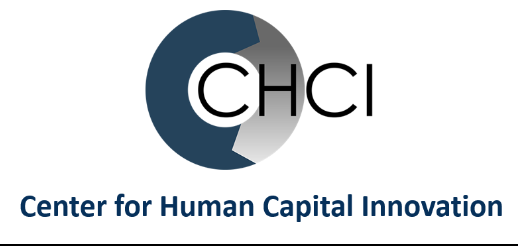
A Skills-Based Organization Is Your Next Strategic Imperative
The last few years have exposed a hard truth: the old way of organizing work around fixed job titles doesn’t move fast enough anymore. As technology rapidly evolves, customers’ expectations intensify, and strategies constantly shift. The result? The traditional model, which was designed for stability, is straining under the pressure.
This is why the concept of a skills-based organization (SBO), has grown in popularity. SBOs take an agile approach, matching people with work based on their capabilities instead of their job title. It’s not just a passing trend; it’s a practical response to how value is truly created in today’s world.
At its best, a skills-based approach helps leaders see work as individual tasks, projects, and problems and deploy the right people with the right skills, faster. It also gives employees a clearer view of their own career opportunities. Yet, like any big change, it can be a messy, costly, and time-consuming journey. Below, we provide a straightforward case for a skills-based approach, the risks involved, and a practical plan to get started.
Why the Shift to Skills, and Why Now?
There are key forces driving the change to SBO, including:
- Technology is rewriting the rulebook: Automation and generative AI are transforming tasks faster than annual employee reviews can be written. Many employees are already worried that their current training won’t prepare them for what’s next. A skills-first approach helps leaders see the competencies actually required and redeploy people accordingly.
- The talent shortage isn’t going away: CEOs consistently rank attracting and keeping great people as a top priority. A skills-based approach widens the talent pool, looking beyond degrees and pedigrees to focus on potential. This opens the door to non-traditional talent and adds a variety of backgrounds, perspectives, and experiences.
- Internal mobility is smarter than constant hiring: By understanding “skill adjacencies”—how skills from one role can be applied to another—organizations can move employees across roles with targeted upskilling instead of layoffs and rehiring. This saves time and money.
- Employees want to grow and they may leave if they can’t: Most workers say continuous skill development is essential, and many will switch jobs if they can’t find it. Letting them know about in-house opportunities and providing the skills they need to get there is a huge boost for employee engagement and retention.
What Does an SBO Look Like?
An SBO doesn’t avoid structure entirely; it makes it flexible enough to move talent where it’s needed most. Work is broken down into tasks, projects, and missions. Teams form around a problem, pulling in people with the right capabilities, then reconfigure as needs change. Job descriptions serve as a guide, not a limit or barrier.
Recruiting focuses on demonstrable skills and potential instead of where someone went to school or a particular career path. The question shifts from, “Where did you work?” to “What can you contribute right now?” Learning is personalized and tied directly to career development. This can look like micro-lessons, mentoring, or stretch assignments recommended by systems that understand a person’s current skills and identify skill gaps for the future. When opportunities are posted on internal marketplaces and matched based on skills, employees that previously would not have been considered can raise their hand for projects. This leads to broader participation and more robust teams.
Beware: The Downsides Are Real
While some tech vendors and consulting firms might present the SBO as an easy win, it’s not. Before you declare “skills-first,” be sure to weigh these considerations:
- Cost and complexity: SBO requires significant investment in HR tech, data integration, and change management. Building a useful, business-relevant skills taxonomy takes work and access to resources.
- Taxonomy churn: The language around skills changes quickly. Without clear ownership and regular updates, the system can either become obsolete or change so fast that no one can keep up.
- Data quality and privacy: Inferred skills can be wrong, and profiles go stale. Employees might be resistant to sharing data or worry about how it will be used. Clear privacy frameworks and transparency is key.
- Validation: Many tools exist to help you validate self-reported skills and skills levels, yet ultimately, it takes humans to make the final call. After all, if the people processes are eventually going to be based on a skills taxonomy and architecture, it had better be accurate.
- Algorithmic bias: If training data reflects historical biases, the matching systems can perpetuate them. Regular audits and human oversight are essential, not optional.
- Manager burden: Shifting from static roles to dynamic work is a big change for leaders. Managers have to coach and scope projects, often under pressure. They will need support to do this.
- The “projectization” risk: Constant skills matching can fragment careers and lead to burnout if fluidity isn’t balanced with stability, team cohesion, and clear accountability.
- Uncertain ROI at first: The real benefits take time to appear. If the internal marketplace goes unused, or if learning isn’t applied to real work, the business case can look weak. Be prepared for a long road, and measure everything relentlessly.
How to Start: Evolution, Not Revolution
The most successful efforts start with a clear business problem and build from there. Following a deliberate, incremental path prevents adoption from becoming overwhelming and provides space to adjust to the needs of the organization.
- Define a Clear North Star: What problem is “skills-first” meant to solve? Faster product cycles? A new customer experience? A specific pivot? Tie outcomes to metrics that executives already care about, like how long it takes to staff critical work or internal fill rates.
- Identify a Starting Point: Pilot the approach where the need is urgent and the group is manageable: a specific product line, a single function, or a region. Use this to test taxonomy, matching logic, and incentives.
- Design for Adoption: Treat managers and employees like customers. Clearly explain “what’s in it for them,” build simple user journeys (such as creating a profile or finding an opportunity), and give them the tools to succeed. Acknowledge and reward leaders who are willing to share talent and employees who are willing to stretch.
- Build the Backbone: Establish governance for naming skills, verifying proficiencies, and tying it all to pay and promotions. Decide what is standardized organization-wide and what can be customized locally.
- Integrate the Work: Skills can’t live in an HR silo. Partner with Finance on workforce planning with IT on data and security or business leaders on work design. Use agile methods—like backlogs, sprints, and retrospectives—to keep things moving and improving.
- A 90-Day Action Plan:
- Weeks 1–2: Define the problem, key metrics, and success criteria. Get an executive sponsor and a cross-functional team on board.
Weeks 3–6: Inventory your critical work and the skills required. Create a limited, initial skills list using external data and internal expertise. Choose a pilot group, a pressing problem they might solve, and the tech you need to get started. - Weeks 7–10: Launch the pilot with clear privacy commitments, asking team members to create profiles. Post a small number of high-value projects and roles on the internal marketplace. Get your managers and employees up to speed on the new process.
- Weeks 11–13: Measure and learn. Track how many people are active, how many matches are made, and how long it takes to staff new projects. Collect success stories, and use retrospectives to refine the governance and adoption plan.
The Bottom Line
The traditional job-based model isn’t dead; it’s just not enough on its own. A skills-based model provides the dynamic approach modern organizations need to move faster, deploy talent smarter, and offer employees a path to grow. It’s hard work, and it isn’t cheap; however, with a thoughtful approach anchored to real business outcomes, it becomes a lasting competitive advantage.
Do you have experience with an SBO? Would you benefit from work assignments based on your skill level instead of your job title? Leave a comment below, send us an email, or follow us on LinkedIn.


Leave A Comment